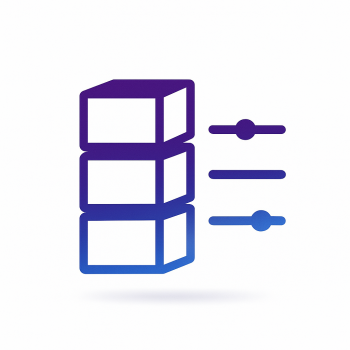Magento 2 and Digital Twins: Simulating Store Performance

Magento 2 and Digital Twins: Simulating Store Performance
Ever wondered how your Magento 2 store would perform under Black Friday-level traffic before it actually happens? Or how a new extension might impact your checkout flow without risking your live environment? That's where digital twins come into play – and they're revolutionizing how we optimize Magento stores.
In this post, we'll explore how you can create a virtual replica of your Magento 2 store to test, predict, and optimize performance without touching your production environment. Let's dive in!
What Exactly is a Digital Twin?
A digital twin is essentially a virtual clone of your physical store – in this case, your Magento 2 installation. It mimics all aspects of your ecommerce operations:
- Product catalog structure
- Customer behavior patterns
- Checkout flows
- Server configurations
- Extension interactions
The magic happens when you can stress-test this twin with simulated traffic, analyze performance bottlenecks, and implement fixes – all before rolling changes to your live store.
Why Magento 2 Stores Need Digital Twins
Magento's complexity makes it particularly suited for digital twin technology. Consider these scenarios:
- Extension Testing: That new payment gateway looks great, but how will it handle 500 concurrent checkouts?
- Traffic Spikes: Will your store survive the holiday rush or a viral product launch?
- Migration Planning: Testing a Magento upgrade without risking downtime.
- Performance Optimization: Identifying which elements slow down your category pages.
Traditional staging environments don't cut it anymore. They're static and can't simulate real-world conditions. Digital twins bring your store to life in a controlled virtual space.
Building Your Magento 2 Digital Twin
Here's how to create a basic digital twin setup for your Magento store:
Step 1: Environment Replication
First, we need to mirror your production environment. This includes:
# Clone your Magento installation
rsync -avz /var/www/html/production/ /var/www/html/twin/
# Export your database
mysqldump -u username -p magento_production > magento_twin.sql
# Import to twin database
mysql -u username -p magento_twin < magento_twin.sql
# Update base URLs in the twin
mysql -u username -p magento_twin -e "UPDATE core_config_data SET value = 'http://twin.yourdomain.com' WHERE path LIKE '%web/%base_url%'"
Step 2: Traffic Simulation
Now let's simulate traffic using JMeter. Create a test plan that mimics:
- Product browsing patterns
- Add-to-cart behavior
- Checkout flows
- Search queries
Here's a basic JMeter test plan structure:
<?xml version="1.0" encoding="UTF-8"?>
<jmeterTestPlan version="1.2" properties="5.0" jmeter="5.4.1">
<hashTree>
<TestPlan guiclass="TestPlanGui" testclass="TestPlan" testname="Magento Twin Test" enabled="true">
<stringProp name="TestPlan.comments"></stringProp>
<boolProp name="TestPlan.functional_mode">false</boolProp>
<boolProp name="TestPlan.serialize_threadgroups">false</boolProp>
<elementProp name="TestPlan.user_defined_variables" elementType="Arguments" guiclass="ArgumentsPanel" testclass="Arguments" testname="User Defined Variables" enabled="true">
<collectionProp name="Arguments.arguments"/>
</elementProp>
<stringProp name="TestPlan.user_define_classpath"></stringProp>
</TestPlan>
<hashTree>
<ThreadGroup guiclass="ThreadGroupGui" testclass="ThreadGroup" testname="Standard Browsing" enabled="true">
<intProp name="ThreadGroup.num_threads">50</intProp>
<intProp name="ThreadGroup.ramp_time">60</intProp>
<longProp name="ThreadGroup.start_time">1640995200000</longProp>
<longProp name="ThreadGroup.end_time">1640995200000</longProp>
<boolProp name="ThreadGroup.scheduler">false</boolProp>
<stringProp name="ThreadGroup.duration"></stringProp>
<stringProp name="ThreadGroup.delay"></stringProp>
</ThreadGroup>
<hashTree>
<HTTPSamplerProxy guiclass="HttpTestSampleGui" testclass="HTTPSamplerProxy" testname="Homepage" enabled="true">
<boolProp name="HTTPSampler.postBodyRaw">false</boolProp>
<stringProp name="HTTPSampler.domain">twin.yourdomain.com</stringProp>
<stringProp name="HTTPSampler.port">80</stringProp>
<stringProp name="HTTPSampler.protocol">http</stringProp>
<stringProp name="HTTPSampler.path">/</stringProp>
<stringProp name="HTTPSampler.method">GET</stringProp>
</HTTPSamplerProxy>
<hashTree/>
</hashTree>
</hashTree>
</hashTree>
</jmeterTestPlan>
Step 3: Performance Monitoring
Integrate monitoring tools to track:
- Server resource usage (CPU, memory, disk I/O)
- Database query performance
- PHP execution times
- Frontend rendering metrics
A simple New Relic integration can be added to your Magento twin:
# Install New Relic PHP agent
wget -O - https://download.newrelic.com/548C16BF.gpg | sudo apt-key add -
sudo sh -c 'echo "deb http://apt.newrelic.com/debian/ newrelic non-free" > /etc/apt/sources.list.d/newrelic.list'
sudo apt-get update
sudo apt-get install newrelic-php5
# Configure for Magento
sudo newrelic-install install
Advanced Digital Twin Techniques
Once you have the basics running, consider these advanced optimizations:
1. Machine Learning for Predictive Scaling
Train models to predict traffic patterns and automatically scale resources:
# Sample Python script for predictive scaling
import pandas as pd
from sklearn.ensemble import RandomForestRegressor
from magento_api import get_historical_traffic
# Load historical traffic data
data = get_historical_traffic()
# Prepare features
features = pd.DataFrame({
'hour_of_day': data['timestamp'].dt.hour,
'day_of_week': data['timestamp'].dt.dayofweek,
'is_holiday': data['is_holiday'],
'prev_traffic': data['visitors'].shift(1)
})
# Train model
model = RandomForestRegressor()
model.fit(features, data['visitors'])
# Predict next hour's traffic
next_hour = pd.DataFrame({
'hour_of_day': [current_hour + 1],
'day_of_week': [current_day],
'is_holiday': [is_holiday_today],
'prev_traffic': [current_visitors]
})
predicted_traffic = model.predict(next_hour)
2. Extension Impact Analysis
Before installing a new extension on your live store, test its performance impact:
# Magento CLI commands to test extension performance
php bin/magento module:enable Vendor_NewExtension
php bin/magento setup:upgrade
php bin/magento setup:di:compile
php bin/magento setup:static-content:deploy -f
# Run performance tests
ab -n 1000 -c 100 http://twin.yourdomain.com/category.html
3. Checkout Flow Optimization
Simulate different checkout configurations to reduce cart abandonment:
// Sample configuration for testing one-page vs. multi-step checkout
$paymentMethods = ['paypal', 'stripe', 'banktransfer'];
$shippingMethods = ['flatrate', 'freeshipping', 'tablerate'];
foreach ($paymentMethods as $payment) {
foreach ($shippingMethods as $shipping) {
$config = [
'payment' => $payment,
'shipping' => $shipping,
'checkout_type' => 'onepage' // or 'multistep'
];
runCheckoutTest($config);
}
}
Real-World Case: Preparing for Black Friday
Let's walk through a practical example of using a digital twin to prepare for Black Friday:
- Baseline Testing: Run your current configuration against 5x normal traffic
- Identify Bottlenecks: Database queries slowing category pages? Checkout API timing out?
- Implement Fixes: Add Redis caching, optimize Elasticsearch queries
- Validate Improvements: Re-test with same load to verify improvements
- Plan Scaling: Determine when to add additional web servers
Here's how you might configure Redis for better performance in your digital twin:
# In app/etc/env.php
'cache' => [
'frontend' => [
'default' => [
'backend' => 'Cm_Cache_Backend_Redis',
'backend_options' => [
'server' => '127.0.0.1',
'port' => '6379',
'persistent' => '',
'database' => '0',
'password' => '',
'force_standalone' => '0',
'connect_retries' => '1',
'read_timeout' => '10',
'automatic_cleaning_factor' => '0',
'compress_data' => '1',
'compress_tags' => '1',
'compress_threshold' => '20480',
'compression_lib' => 'gzip'
]
],
'page_cache' => [
'backend' => 'Cm_Cache_Backend_Redis',
'backend_options' => [
'server' => '127.0.0.1',
'port' => '6379',
'persistent' => '',
'database' => '1',
'password' => '',
'force_standalone' => '0',
'connect_retries' => '1',
'read_timeout' => '10',
'automatic_cleaning_factor' => '0',
'compress_data' => '0',
'compress_tags' => '1',
'compress_threshold' => '20480',
'compression_lib' => 'gzip'
]
]
]
],
Digital Twin Tools for Magento 2
While you can build your own digital twin setup, several tools can accelerate the process:
| Tool | Purpose | Magento Integration |
|---|---|---|
| JMeter | Load testing | HTTP/S protocols |
| Locust | Python-based load testing | Custom user flows |
| New Relic | Performance monitoring | PHP agent |
| K6 | Developer-centric load testing | JavaScript scripting |
| BlazeMeter | Cloud-based load testing | JMeter compatible |
Maintaining Your Digital Twin
To keep your digital twin valuable, follow these maintenance practices:
- Regular Data Syncs: Update product catalog, customer data, and configurations weekly
- Version Alignment: Keep Magento and extension versions identical to production
- Test Automation: Schedule performance tests to run automatically
- Document Findings: Create a knowledge base of performance insights
- Security: Treat your twin with same security as production (firewalls, updates)
When to Consider Professional Solutions
While the DIY approach works, consider professional digital twin solutions when:
- Your store exceeds 50,000 SKUs
- You have complex customizations
- You need advanced predictive analytics
- Your team lacks DevOps resources
Several Magento hosting providers now offer digital twin capabilities as part of their premium packages.
Final Thoughts
Digital twins represent the future of Magento performance optimization. By creating a virtual replica of your store, you gain unprecedented ability to:
- Test changes risk-free
- Predict and prepare for traffic spikes
- Optimize every customer touchpoint
- Reduce costly downtime
The initial setup requires effort, but the long-term benefits in reduced risk and improved performance make digital twins an essential tool for serious Magento merchants.
Have you experimented with digital twin technology for your Magento store? Share your experiences in the comments!





